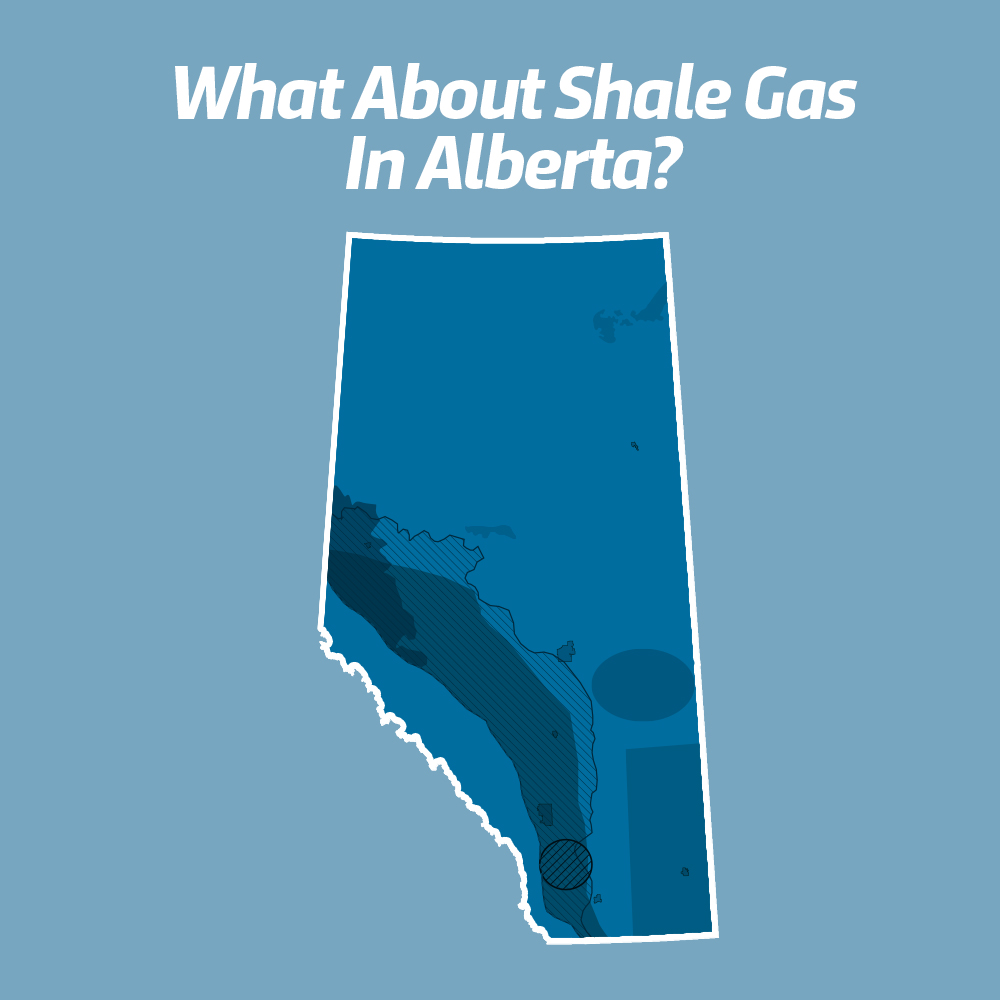What about shale gas in Alberta?

Previously, we’ve discussed the remarkable rise of U.S. shale gas production , and the consequences it has had for North American’s natural gas landscape.
As we noted, shale gas only became economical to produce on a wide scale within the past seven years thanks to advances in technology. However, it has long been known that natural gas could be found trapped in shale formations.
So that begs the question: what about shale gas in Alberta?
Well, in an October 2012 study, the predecessor to the Alberta Energy Regulator estimated that Alberta has a total of 3,424 trillion cubic feet (Tcf) of ‘in-place’ shale and siltstone-hosted resources, located in six key formations. These include the Duvernay, Muskwa, Montney, Nordegg, and Basal Banff/Exshaw formations.


While these resources have been identified, it is unclear when and to what extent it would be economically and technologically feasible to develop them. As a result, they are not treated as “proven” reserves at this time.
However, it’s clear these resources are significant in size. Even if only 10% of these identified resources are deemed recoverable (342 Tcf), that would still be about ten times the current size of Alberta’s remaining established reserves (32 Tcf). In other words, a massive amount of natural gas.
Despite the significance of our ‘in-place’ shale and siltstone-hosted natural gas resources, Alberta has had very limited shale gas production thus far.
In 2014, there were only 238 wells producing shale gas wells in Alberta, which collectively produced 0.1 Bcf per day. By comparison, there were 104,046 conventional gas wells, and each day Alberta produced 9.4 Bcf of conventional gas. Put simply, shale gas production in Alberta has barely begun.

In addition to shale gas, Alberta has other supplies of unconventional natural gas in the form of coal bed methane (CBM). CBM is natural gas found in coal seams. CBM can be extracted by drilling into these coal seams using techniques that are similar to natural gas wells.
Alberta’s ultimate ‘in-place’ resources of CBM are estimated to be 500 Tcf. However, due to the early stage of CBM development, the Alberta Energy Regulator has yet to determine how much of this resource is ultimately recoverable. As it stood in 2014, Alberta’s “remaining established reserves” of CBM were only 1.7 Tcf.
Shale gas and other unconventional gas resources in Alberta offer potential opportunities for development, using technologies similar to those used to unlock U.S. shale gas. Given the collective volume of these in-place resources, they are strategically positioned to be the future of natural gas exploration and production in our province. This is something to consider as we examine ways to optimize Alberta’s royalty framework for the future.
Sources: Alberta Energy; Alberta Energy Regulator